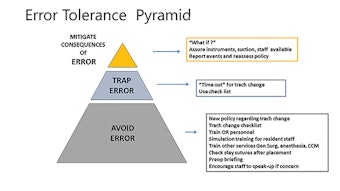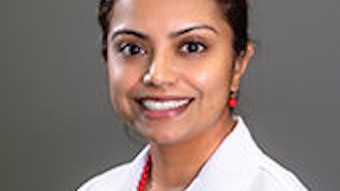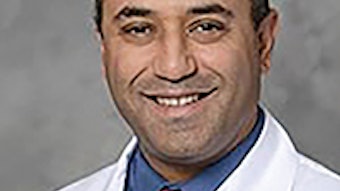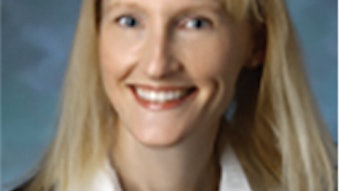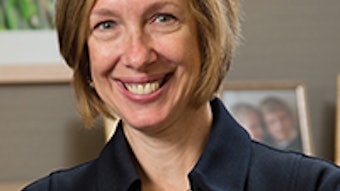Differences in Parathyroid Surgery around the World
At the AAO-HNSF 2020 Virtual Annual Meeting & OTO Experience, head and neck endocrine surgeons from around the world met virtually to discuss techniques and differences in the management of primary hyperparathyroidism. Differences in resources and access to care highlighted various opinions across the topic.
Jonathon O. Russell, MD; Antonio Bertelli, MD; Avi Hefetz-Khafif, MD; and Ralph P. Tufano, MD, MBA
At the AAO-HNSF 2020 Virtual Annual Meeting & OTO Experience, head and neck endocrine surgeons from around the world met virtually to discuss techniques and differences in the management of primary hyperparathyroidism. Differences in resources and access to care highlighted various opinions across the topic. The virtual format was new, but the conversation covered some notable differences in management. Ralph P. Tufano, MD, MBA, from John Hopkins University in Baltimore, Maryland, served as the moderator for the session.
Antonio Bertelli, MD, from São Paulo, Brazil, began the discussion by highlighting the presentation and management of hyperparathyroidism in Latin America. “Patients with hyperparathyroidism in Brazil are more likely to present with classic symptoms of nephrolithiasis and are more likely to have a single parathyroid gland that is problematic,” he said. He described the typical preoperative evaluation of patients and the fundamental role of ultrasound. Whereas other countries might have a higher incidence of multigland parathyroid disease, most of the cases that he sees are single adenomas that can be treated with a focused surgery. He mentioned that patient characteristics, hospital resources, and expectations are highly variable depending on where he might see a patient and what their background is.
Jonathon O. Russell, MD, from Johns Hopkins University, focused on adenomas and intervention in the United States. As opposed to Brazil, he described that it is more common for patients in North America to be asymptomatic, with disease often first noted incidentally during routine lab evaluation. He stressed that while there are many imaging methods that can be used to localize a parathyroid adenoma, the decision to operate or not is based on biochemical values and well-defined operative indications. If surgery is needed, he stressed that surgeon-performed ultrasound is the most available and most generally valuable instrument in his practice. When considering remote access approaches, such as scarless vestibular approach parathyroidectomy, this is especially important.
While parathyroid surgery is generally completed via a cervical incision, Avi Hefetz-Khafif, MD, from Assuta Medical Center in Tel Aviv, Israel, highlighted his results using the scarless vestibular approach to the parathyroid glands. With a combination of videos and photos, he demonstrated the potential benefits to patients of all ages who are able to have surgery without a cutaneous incision. In presenting his work, he was able to demonstrate that his outcomes have been similar when using both this new approach and the more traditional cervical incision. “Patients have a choice about whether or not they are okay with a scar,” he said. Learning the technique has also allowed him to offer scarless options to patients interested in other cervical procedures. For a patient to be considered for an endoscopic parathyroidectomy via the vestibular approach, he must have a well-localized adenoma by two imaging studies (usually a high-quality ultrasound and sestamibi scan). Only patients with concordant localization should be candidates.
In a virtual roundtable, Dr. Tufano posed several questions that got to the heart of differences between the practices. He led by asking about the use of intraoperative parathyroid hormone (IOPTH). Not surprisingly, this topic generated a robust response from the group. For Dr. Hefetz-Khafif, “When my patients have a well localized gland, I know confidently that I will cure them with a focused parathyroid surgery. It is hard to justify the extra hour of anesthesia time that it takes at my hospital for a full set of IOPTH values to result.” Dr. Bertelli agreed: “More than 95% of patients will be cured when a parathyroid gland is localized on two or more studies.” He added that access to this IOPTH could be limited for some of his patients, depending on the hospital in which he may be operating.
Despite these comments, Dr. Tufano clarified that in the United States it is difficult to develop a high-volume parathyroid surgery practice without the extra protection IOPTH provides to help avoid missing that additional 1%-2% of patients who may have multigland disease. “While you may cure almost all of your patients with a focused surgery, it is important to make sure that patients understand the inherent limitations of focused surgery without IOPTH.” He also reminded participants that recent surgical guidelines go so far as to make IOPTH a recommendation for surgeons who are performing focused parathyroid surgery. Dr. Hefetz-Khafif agreed that with a shorter IOPTH time and lower cost, it should be recommended for all focused surgery.
The panelists also had variations with regards to their preferences for imaging. While some preferred to get a CT scan for all patients, other members felt that an ultrasound was sufficient in some cases. All agreed that the addition of a second imaging modality did increase surgeon confidence and often improved the experience for patients.
The panel agreed that focusing as a team on parathyroidectomy was the key to excellent outcomes. “Surgeons have the opportunity to receive immediate feedback when they perform a surgeon-directed ultrasound right before surgery,” said Dr. Russell. “Because radiologists and endocrinologists do not get that immediate feedback, closing the loop is an important way to help the entire team improve.” Dr. Bertelli added, “No matter where you practice and what resources you have, you improve as a parathyroid surgeon with experience, and that applies to everyone on the team.”
This topic was presented as part of the International Symposium of the AAO-HNSF 2020 Virtual Annual Meeting & OTO Experience.
